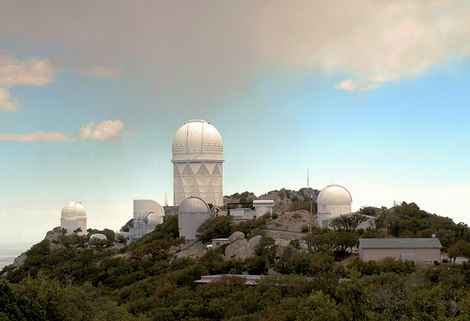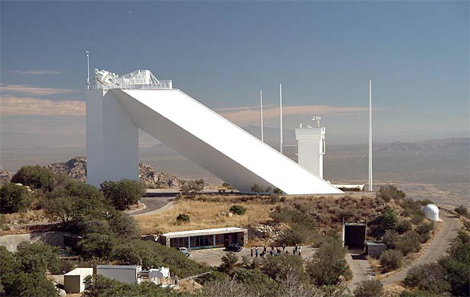Tucson’s clear skies have many advantages to locals, most notably sun, sun and more sun. But what about when the sun sets and the moon rises over our desert town? Arguably just as beautiful as the sun-drenched daytime, Tucson’s nights are filled with bright, starry skies. Helping us enjoy this natural phenomenon is Kitt Peak National Observatory—as the world’s largest collection of optical telescopes, Kitt Peak is definitely worth a night or daytime visit, whether you are an out-of-towner or a resident.

While Kitt Peak is an extremely famous observatory known for its amazing views and great visitor programs, there are still many Tucsonans who have yet to visit the site. If you’re wondering if it’s worth the drive and the time, wonder no more. Kitt Peak has long been known as a world-renowned astronomical program, but public programs weren’t established until the fall of 1996. A second observatory was established in 2002, and finally, in 2006, the third observatory was created.
Located on the Tohono O’odham reservation at an elevation of 6,875 feet above sea level, Kitt Peak is home to 24 optical and two radio telescopes which represent eight astronomical research institutes. There are many tour and visitor options to choose from, the Nightly Observing Program being a popular choice. Hosting 7,000 people each year, the Nightly Observing Program is offered each and every night at the visitor center and offers the public the opportunity to get an eyeful of everything from planets to distant galaxies through use of 20- and 16-inch telescopes. Because the Nightly Observing Program is so popular, Kitt Peak recommends that you make reservations 2-4 weeks in advance. Also, be sure wear warm clothes and even bring a hat and gloves as the temperatures are significantly cooler than on the desert ground.

Rather make it a daytime trek to Kitt Peak? Not a problem, as the visitor center and museum offers three hour-long guided tours every day. Each tour is different, so plan your visit around what you are most interested in seeing. The 10 a.m. tour is of the world’s largest telescope, the McMath-Pierce solar telescope; the 11:30 a.m. tour features the 1964-built, 2.1-m telescope (one of the earliest at Kitt Peak); and the 1:30 p.m. tour guides you around the Mayall 4-m telescope, a landmark since 1973. If you’d rather explore the grounds on your own, a self-guided walking tour map is available in the visitor center, or you may download audio tours on the Kitt Peak Web site.
In addition, ongoing special programs and classes occur at Kitt Peak, including Youth Group Overnights, Meteor Mania and SUN-Day on the Solstice. For more information about rates, driving directions, programs or tours at Kitt Peak, www.noao.edu/outreach/kpoutreach.html.
